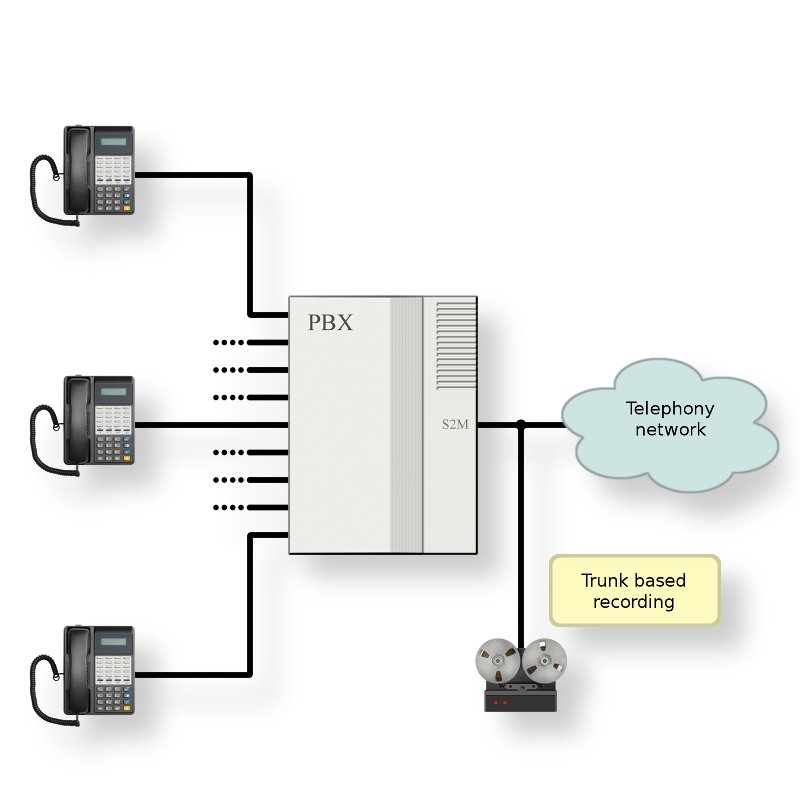Trunk based recording solutions
Tapping the phone system's trunk is a cost-effective way to record a large number of channels. When using E1 trunks a single recording device can tap up to 30 channels simultaneously. However, a trunk based recorder sees only the information available on the trunk. So it does not know the extension number of a local party if the number has been modified or suppressed in the phone system.
Call matching is one solution to the problem of missing extension numbers. Extension information can be obtained from different sources (phone system's CTI interface (TAPI), automatic dialer log or information from an ACD system).

Advantages
- Central solution which can be easily installed and is cost-effective.
- Scales well to high channel counts.
- Easy to record all external communication.
- The variety of line types is limited on the trunk, since these are all public lines from phone network operators following published phone network standards. So there is a good compatibility of recorders and phone lines.
Disadvantages
- Information about calls being forwarded or diverted is not available on the trunk. Also the calling party on outbound calls might be unknown if the calling party number is suppressed or replaced with a central dial-in number (This problem may be solved with call matching).
- Central point of failure.
- If only some calls should be recorded the software needs to be configured with recording rules. These need the extension information and require time for configuration.
- Only the external calls are visible on trunk of a phone system, so only external calls can be recorded.
